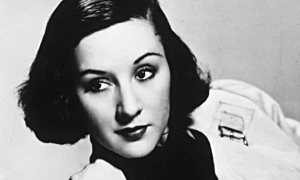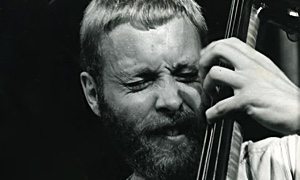Home » Jazz Articles » First Time I Saw » Just Plain Trane
Just Plain Trane
This was not the plaintive, lyrical Coltrane of 'Round Midnight' and 'Bye, Bye, Blackbird,' This was Coltrane at his next level...
Miles had just finished his immaculate solo on "Straight, No Chaser," and as was his habit, left the stand to hover in the shadows, aware perhaps that his charisma could be a distraction from the soloist. Coltrane stepped to the microphone and put his tenor to his lips. I focused my field glasses on him. He had a way of standing straight behind his horn with his pelvis tilted slightly forward, his shoulders and upper body canted back like a man bracing himself against a windstorm. His feet were planted squarely on the floor, a stance he did not change for the entire length of his solo. His eyes remained closed and his horn never left his lips.
Randall's Island was designed for sporting events, not the intimacy of a jazz concert. The arena, with its stone bleachers, created a sense of distance between the music and the listeners that seemed immense. But Coltrane filled it instantly. His music rolled out over the crowd and covered everything like a shimmering membrane. Instead of straight melodic ideas constructed sequentially, Coltrane produced clusters of melodies that flew from his horn simultaneously in several directions, like swarms of butterflies.
That night, he took quite a few choruses, but not as many as he would later routinely take with his own group. To listeners unaccustomed to such abstract playing, often the rhythm section was the only point of reference. This was not the plaintive, lyrical Coltrane of "'Round Midnight and "Bye, Bye, Blackbird. This was Coltrane at his next level, with his incredibly unique tone and his miraculous sense of harmony. This was Coltrane at the beginning of his search. The music seemed to come out of him all at once now. He was merely "the vessel, the instrument through which the music was flowing. In contrast to the intensely personal horn lines that Miles played, or the beautifully crafted, heart-felt "songs that Cannonball composed in his alto solos, Coltrane's music was simply a sound that came from some unknown place and passed through this man's body and out his horn. The person had almost completely disappeared into the music he was playing. What was left was the sound of Beauty itself.
After Coltrane left Miles's group, I saw him with his own band at the Jazz Gallery in the Village. (This was before Elvin.) Young Pete La Roca was on drums and you could see from the delirious expressions on his face that 'Trane was taking him to a musical realm he'd never visited before. But even here in the intimacy of this club, it was still impossible to get any real sense of Coltrane's personality. It was all just the music.
Just about every other jazz giant that I'd had the good fortune to hear in person were unique individuals with their own fascinating personality traits: Bud Powell—full of impish experimentation and child-like daring; Monk with his unforgettable, playfulness that belied the complexity of his musical genius: Miles, with his riveting looks and impeccable charisma on stage.
Coltrane displayed no such distinguishing characteristics. He dressed in plain workman-like dark suits and colorless ties. He stood motionless at the mike with his eyes closed and his mouth focused on the horn. When he finished his solo, it was not so much that he did not acknowledge the applause, but rather that he seemed unaware of it. He would just step away to the side of the stand and disappear.
Watching Coltrane was about as interesting as watching a Zen master meditating. I saw him many more times in small intimate clubs like the Half Note and the Village Vanguard, but I can never remember hearing him speak to the audience. I never heard him introduce the other players in the band. If that chore was not taken up by an MC, it was left undone. (Of course, if you were there to hear 'Trane, you knew who he was with him.) His reticence always seemed quite real and natural, not contrived. He gave you so much with his music, you couldn't possibly expect any more from him on any other level. Still, you wondered what the rest of him was like. During the breaks, he'd disappear into the smoky air of the club someplace, even while the empty bandstand seemed to reverberate with what had just been played there.
John Coltrane was not simply a musician, he was a musical instrument or perhaps a force that had been miraculously set down among us to invoke our reverence and awe. He was utterly without irony, sarcasm or guile. He was the sound of beauty encased in a human form.
< Previous
The Lyric
Next >
Miles On A Good Day
Comments
Tags
For the Love of Jazz
 All About Jazz has been a pillar of jazz since 1995, championing it as an art form and, more importantly, supporting the musicians who create it. Our enduring commitment has made "AAJ" one of the most culturally important websites of its kind, read by hundreds of thousands of fans, musicians and industry figures every month.
All About Jazz has been a pillar of jazz since 1995, championing it as an art form and, more importantly, supporting the musicians who create it. Our enduring commitment has made "AAJ" one of the most culturally important websites of its kind, read by hundreds of thousands of fans, musicians and industry figures every month.























